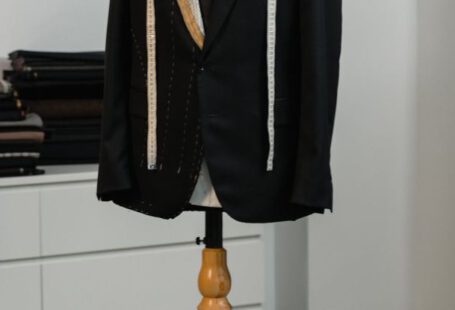Hiking is an exhilarating outdoor activity that allows individuals to connect with nature while getting some exercise. Whether you are a seasoned hiker or just starting out on your hiking journey, having the right gear is essential to ensure a comfortable and safe experience. While the focus is often on choosing the right backpack, hiking boots, and other equipment, the importance of a well-rounded hiker’s wardrobe should not be underestimated. Here are the must-haves for a hiker’s wardrobe that will keep you comfortable, protected, and stylish on the trails.
**Moisture-Wicking Base Layers**
One of the most crucial components of a hiker’s wardrobe is a set of moisture-wicking base layers. These are the foundation of your hiking outfit and play a significant role in regulating your body temperature and keeping you dry and comfortable throughout your hike. Look for base layers made of materials like merino wool or synthetic fabrics that are designed to wick moisture away from your skin. Avoid cotton as it retains moisture and can lead to discomfort and chafing.
**Versatile Hiking Pants**
A good pair of hiking pants is a must-have for any hiker. Opt for pants that are lightweight, breathable, and quick-drying to ensure comfort on the trail. Convertible pants that can be zipped off into shorts are a great option for variable weather conditions. Look for pants with a comfortable fit and features like articulated knees for ease of movement. Choose pants with multiple pockets to keep essentials like your phone, map, or snacks easily accessible.
**Protective Outerwear**
Protecting yourself from the elements is crucial when hiking, so investing in high-quality outerwear is essential. A waterproof and windproof jacket will keep you dry and warm in inclement weather. Look for a jacket with adjustable hoods, cuffs, and hem for a customizable fit. Consider a jacket with ventilation options like pit zips to prevent overheating during intense hikes. Additionally, pack a lightweight and packable rain poncho or shell for unexpected rain showers.
**Sturdy Hiking Boots**
Your choice of footwear can make or break your hiking experience, so investing in a pair of sturdy hiking boots is crucial. Look for boots that provide ankle support, traction, and protection from rocks and debris on the trail. Opt for boots that are waterproof and breathable to keep your feet dry and comfortable. Break in your boots before hitting the trails to prevent blisters and discomfort during your hike.
**Comfortable Socks**
Equally important as your hiking boots are your socks. Choose socks made of moisture-wicking and quick-drying materials like merino wool or synthetic blends. Avoid cotton socks, as they can lead to blisters and discomfort on long hikes. Invest in high-quality hiking socks with cushioning in key areas like the heel and toe to provide additional comfort and protection. Consider wearing a thin liner sock underneath your hiking socks for added blister prevention.
**Sun Protection**
Protecting your skin from the sun’s harmful rays is essential when spending extended periods outdoors. Wear a wide-brimmed hat or a cap to shield your face and eyes from the sun. Apply sunscreen with a high SPF to all exposed skin, including your face, neck, and hands. Consider wearing lightweight, breathable sun-protective clothing with UPF ratings for added protection. Don’t forget to wear sunglasses to protect your eyes from UV rays and glare.
**Hydration System**
Staying hydrated is essential when hiking, so having a reliable hydration system is a must. Invest in a hydration bladder or water bottle that is easy to access and refill on the trail. Consider carrying a portable water filter or purification tablets for refilling your water supply from natural sources like streams or lakes. Stay hydrated throughout your hike to prevent dehydration and maintain your energy levels.
**Emergency Essentials**
No hiker’s wardrobe is complete without a few emergency essentials. Pack a basic first aid kit with items like bandages, antiseptic wipes, pain relievers, and blister treatment. Carry a whistle, signaling mirror, and emergency blanket for unexpected situations. Consider bringing a headlamp or flashlight in case your hike extends into the evening. Always let someone know your hiking plans and expected return time for safety.
**Conclusion: Gear up for a Successful Hiking Adventure**
Having the right gear and clothing is essential for a successful hiking adventure. By investing in high-quality, functional, and comfortable clothing and accessories, you can ensure a safe and enjoyable experience on the trails. Remember to choose moisture-wicking base layers, versatile hiking pants, protective outerwear, sturdy hiking boots, comfortable socks, sun protection, a hydration system, and emergency essentials to prepare for any hiking scenario. With the right wardrobe essentials in place, you can focus on enjoying the beauty of nature and the thrill of exploration on your next hiking excursion.





